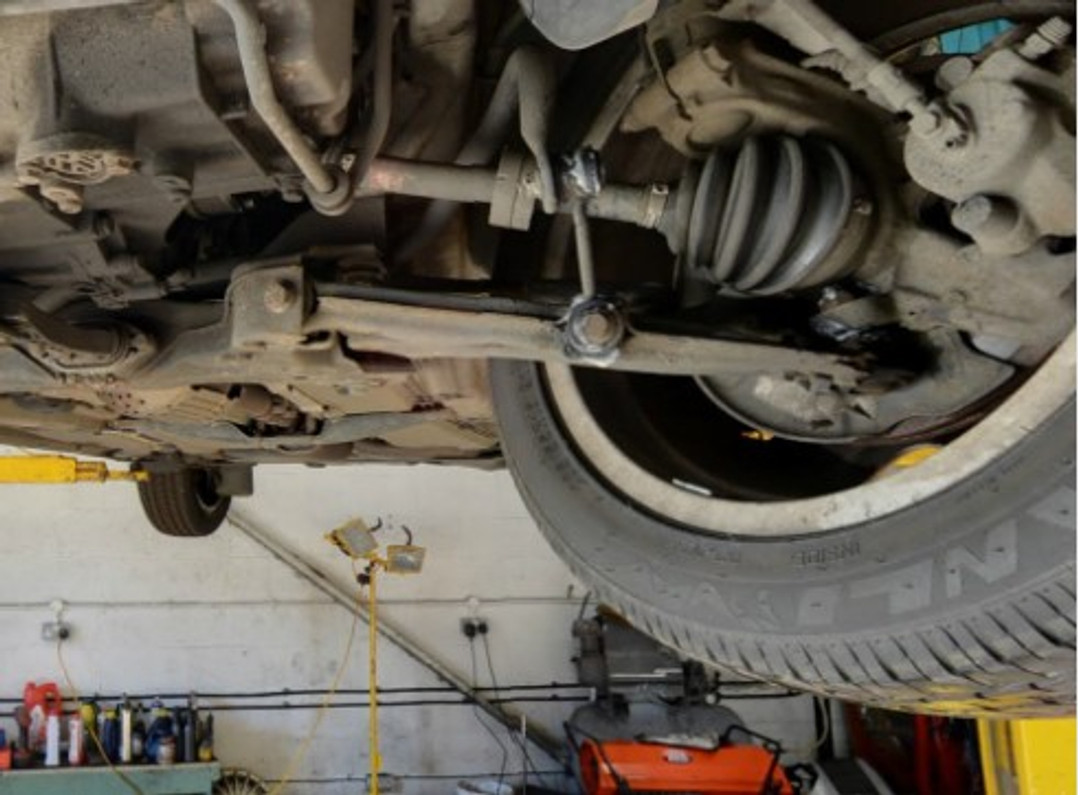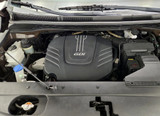How to find car noises while driving the car.
It's hard to find squeaks and rattles in a vehicle's steering, suspension or uni-body when the noise only occurs when driving. Prior to using an electronic listening device like the Steelman Chassis Ear, determine the general location of the noise and under what conditions the noise presents itself. A lot of times there could be multiple noises from vehicles. If working on your own vehicle you are well aware of the noise you're concerned with. If working on someone else's car, it's best to have the tech go on a test drive with the customer and verify the specific noise they're concerned with. Many times the customer will know exactly what driving conditions are needed to duplicate the noise. If the noise cannot be duplicated by the customer, they cannot expect a technician to find the phantom noise. If they can duplicate the noise, the problem will be much easier to identify. Many experienced techs and service writers for that matter can identify common problems, just by hearing a noise. Other noises that are not as common may need to be checked with the Chassis Ears.
A simple mechanic's stethoscope is a useful tool but it does have limitations. The stethoscope cannot be used while the car is being driven in the parking lot or down the road. A specialty tool that can be used while the vehicle is moving, is the is the STEELMAN PRO 60491 ChassisEAR 2. It has six microphones with clips and wires that can be attached to various components in the area of the noise. By listening with the headphones and turning the selector to isolate each of the microphones one by one, the noise can be pinpointed saving a lot of time. The channel that picks up the most noise is noted by color code to help pinpoint the source of the noise. One drawback with this design is having to route the wires through the window, under the vehicle, around exhaust and moving parts of the drive-train. The chance of damaging the wires with this model is high and the set up time to prevent damage to the wires can be time consuming.
The JS60635 wireless chassis ears has four numbered wireless microphones, since there are no wires to run, there is reduced set up time and less chance of damaging the listening device components. Care still needs to be taken with either set of chassis ears. It is necessary for safety, to have someone else driving the car to duplicate the noise while the technician monitors the chassis ears.
Additional Tips
1. Look for rust stains that may indicate worn bushings or loose bolts or components. The metal sleeve of a bushing needs to be stationary, if it moves it will be noisy.
2. Look for TSB's (Technical Service Bulletins) that may have been issued by the car manufacturer. Sometimes additional spot welds are required to the uni-body or updated parts are designed to remedy a noise.
3. Look for signs of a previous impact. Mis-aligned or damaged uni-bodies may be the source of creaking noises, especially if the vehicle has been involved in an accident.
4. Check the torque on every bolt possible, find a loose nut and the fix may be really easy! Suspension and steering bolts are the obvious ones to check. I once found loose bolts on a panel behind the rear seat back. The panel went between the rear strut towers. The bolts were just slightly loose, but created a noise on turns that several shops could not find.
5. Check for loose articles. "Loose articles" could include a jack in the trunk, a car battery causing a thump on an abrupt stop or turn, a pair of sunglasses rattling in the console. I once found a metal wire hook hanging on the rearview mirror, that creaked at every stop.
With common sense, a logical approach and using the right tools, finding noises and performing related repairs can be profitable and make customers very happy.
Recent Posts
-
Head Bolt Stripping in Kia and Hyundai Engines: How Common Is It and How to Fix It
A customer recently emailed us with a great question: “What percent of Kia vehicles would you …9th Jul 2025 -
Pentastar 3.6L Head Bolt Thread Repair on a Budget
We recently received a great question from Michael, a DIYer facing a common problem of stripped thre …19th Mar 2025 -
Save A Thread Blown Out! Larger Thread Repair Needed
When a Save-A-Thread insert fails, it can leave the spark plug hole in your engine significantly lar …8th Jan 2025




